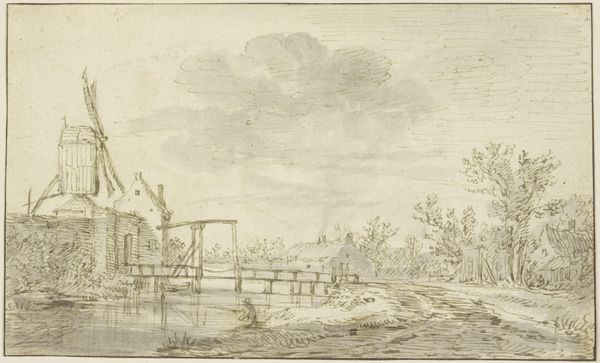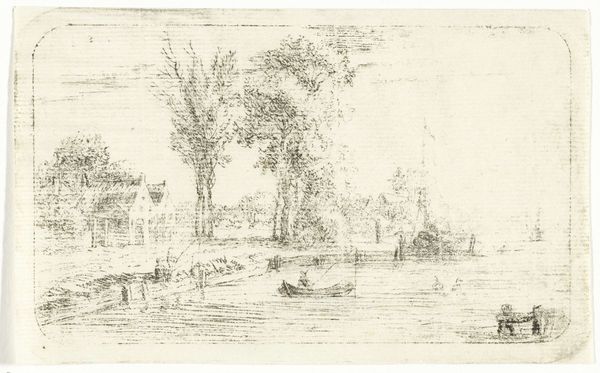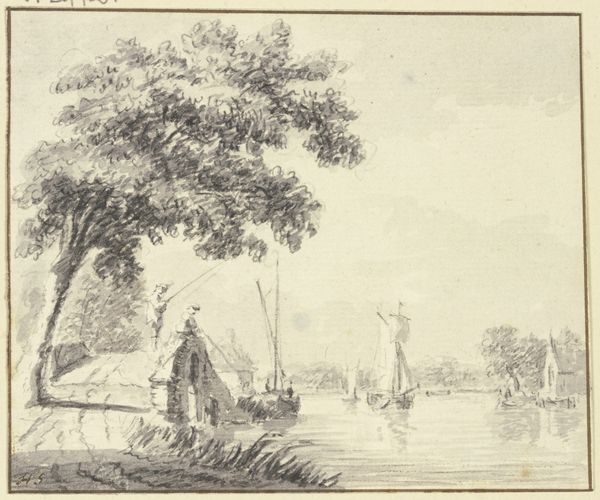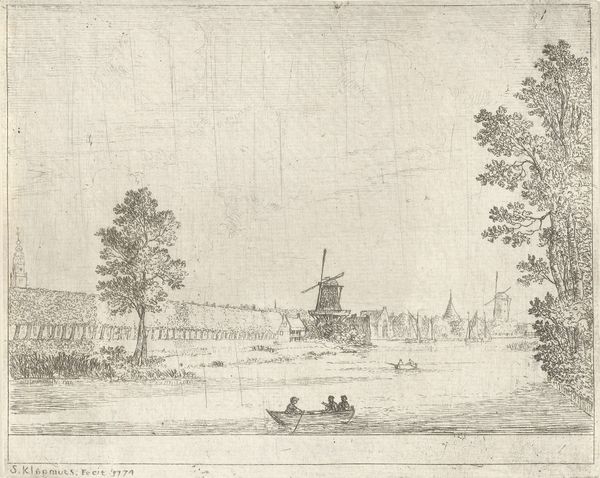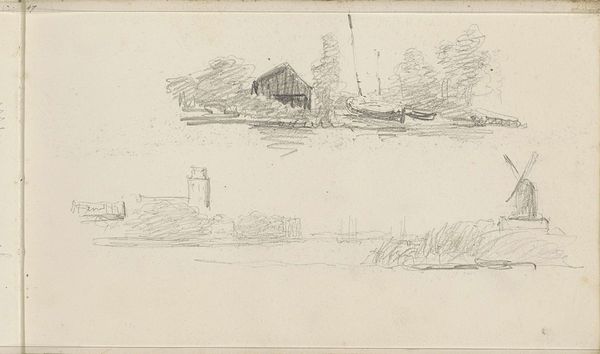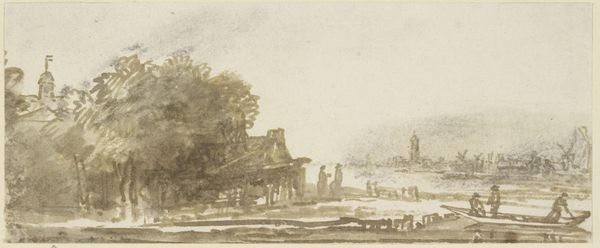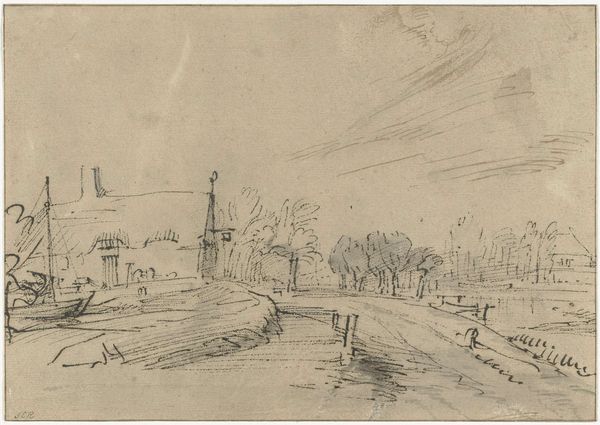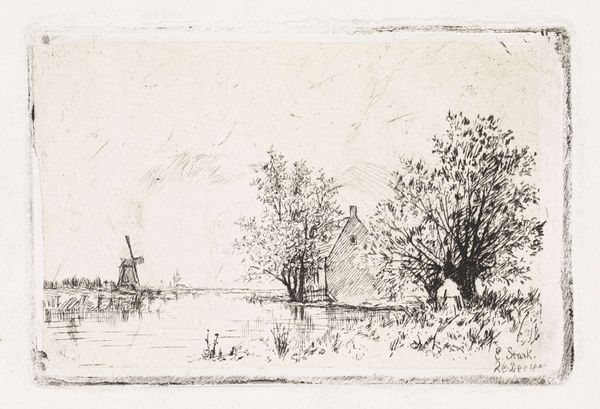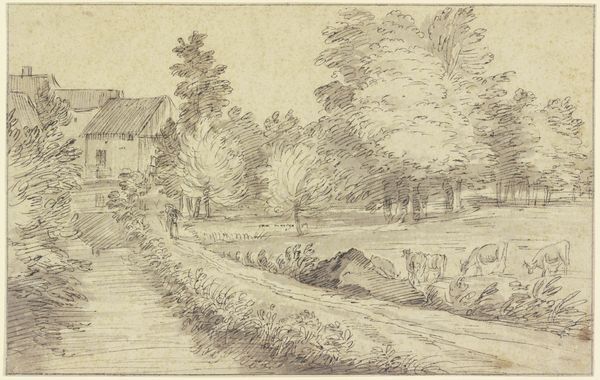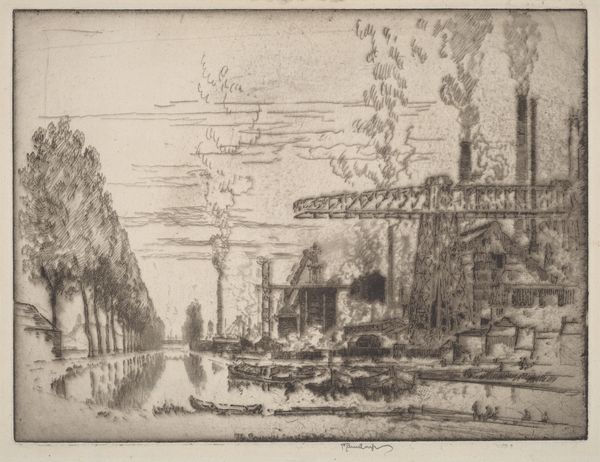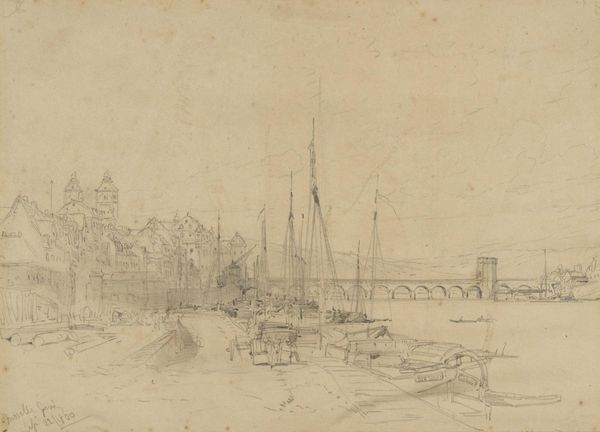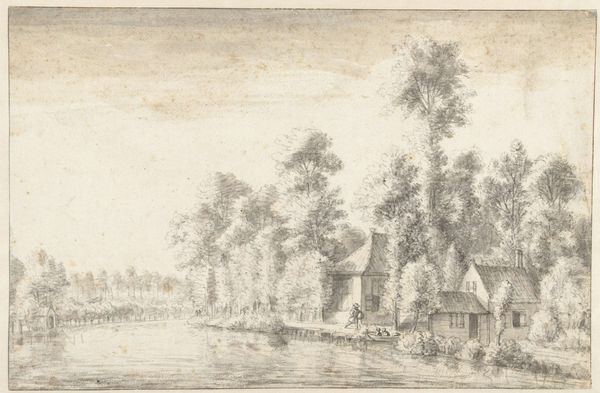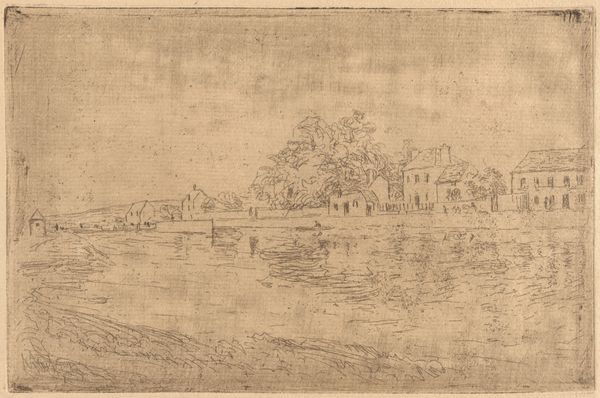
Dimensions: support: 113 x 177 mm mount: 279 x 406 x 6 mm
Copyright: CC-BY-NC-ND 4.0 DEED, Photo: Tate
Curator: What strikes me most about Ford Madox Brown's "The Bridgewater Canal" is its almost dreamlike quality. It feels like a memory, hazy and beautiful. Editor: Yes, it's a fascinating piece that captures a pivotal moment in industrial history. Brown sketched this around 1890, at a time when canals were vital arteries of commerce, yet they also represented the displacement of rural communities. Curator: I'm drawn to the quiet stillness in the scene. The canal, the houses, even the horses – they all seem suspended in time. It makes me wonder what Brown felt about this changing world. Editor: Perhaps a sense of ambivalence. The canal signifies progress but at a cost. His use of light and shadow subtly hints at these tensions – the promise of modernity versus its social and environmental implications. Curator: It's funny, I initially saw only beauty, a nostalgic glimpse into the past. But you're right, there's a depth here, a questioning of what we gain and what we lose. Editor: Art invites us to see beyond the surface and grapple with complex truths, wouldn't you agree? Brown certainly encourages us to look again.
